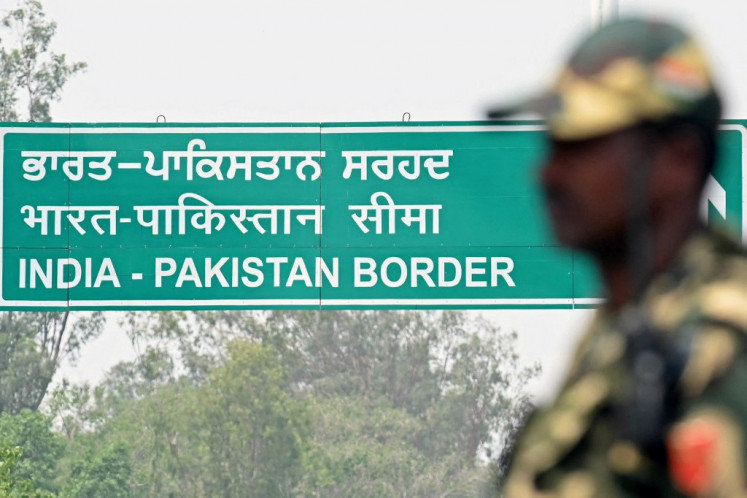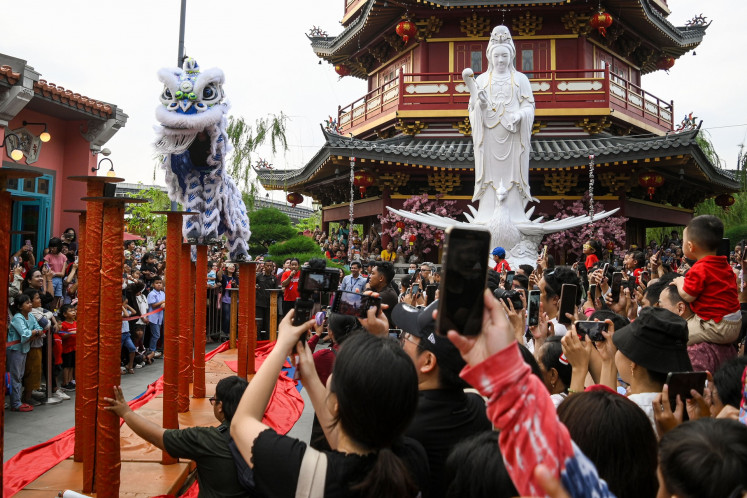Surabaya set to build electric tram system to operate in 2019
Indonesia’s second largest city is embracing 2017 by commencing the construction of tracks for a tram system designed to ease traffic congestion and provide the residents with a new mode of public transport
Change text size
Gift Premium Articles
to Anyone

I
ndonesia’s second largest city is embracing 2017 by commencing the construction of tracks for a tram system designed to ease traffic congestion and provide the residents with a new mode of public transport. The system is slated to start its service in 2019.
The construction of the first leg of the tram tracks would start early this year following the Ministry of Transportation’s approval for the disbursement of a Rp 3 trillion (US$ 222 million) fund for financing the electric tram project.
“The Minister of Transportation had promised that the construction would start early this year. It will be carried out in several phases,” Surabaya mayor Tri Rismaharini said recently.
Earlier on Friday, Minister of Transportation Budi Karya Sumadi inspected Surabaya’s Gubeng train station before attending a closed meeting with the mayor, her aides and representatives from the East Java provincial administration.
It was during the meeting that the minister reportedly gave the final green light for the project and set a time line for its operation.
“Trams are still in operation in European cities. Hopefully, Surabaya could serve as a model for this mode of public transportation. Constructing tram tracks does not require a presidential regulation [Perpres]. We will carry out a public tender [for the project],” he said.
The central government sees the electric tram system as an ideal mass transit system because it costs less compared to light rail transit (LRT) and monorail systems.
Surabaya’s tramway will cover 17.4 kilometers with double tracks connecting Joyoboyo station and Tanjung Perak area. The tramway will go through several major areas in downtown Surabaya.
The first leg of the tramway is four km with double tracks running from Joyoboyo to Pahlawan street.
The Rp 3 trillion fund from the State Budget, Rismaharini said, would also cover the cost for the tram terminals’ construction.
The Surabaya administration had allocated Rp 50 billion from its budget to finance the construction of auxiliary facilities for the electric tram system.
“We will also construct parking facilities in Joyoboyo. These facilities would enable residents to drive to the station and take the tram the rest of the way to work. Two parking facilities will be completed this year, and three additional parking facilities will be built next year,” she said.
Each tram would pull four air-conditioned carriages, and each of the carriages would accommodate up to 40 passengers. It would take the tram ten minutes to travel between shelters, and the whole system would have 36 shelters.
Madiun-based state-owned train manufacturer PT INKA will build the trams and carriages while state-owned train operator PT KAI would operate the system.
Transportation Ministry’s Director General for Railways and Trains Prasetyo Boedi Tjahyono disclosed that the public would enjoy a subsidized tariff when using the electric tram system.
“The official ticket price will be about Rp. 11,000 a ride, but the public would only have to pay Rp 7,000, as the Surabaya administration would cover the remaining Rp 4,000,” he said, adding that the system is predicted to be used by approximately 40.7 million passengers per year.
Agus Windarto, a university lecturer and member of the tram service’s planning team, said that along with the construction of the tramway, the local administration would also improve the quality of the city’s public bus and minivan services.
“E-money payment systems would be introduced. This system would enable passengers to use one card to pay for tram, bus and minivan rides,” he said.
In Surabaya’s transportation master plan, Agus said the city buses’ design would be customized for low floor buses in accordance with the electric tramway routes. Moreover, the city would also rearrange the routes for minivans, the management of which would be taken over by cooperatives. With the arrangement, drivers would receive payment per km rather than the former setoran system, which required drivers to pay a sum of money to the vehicle owners or operators.









